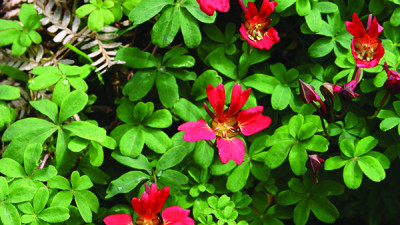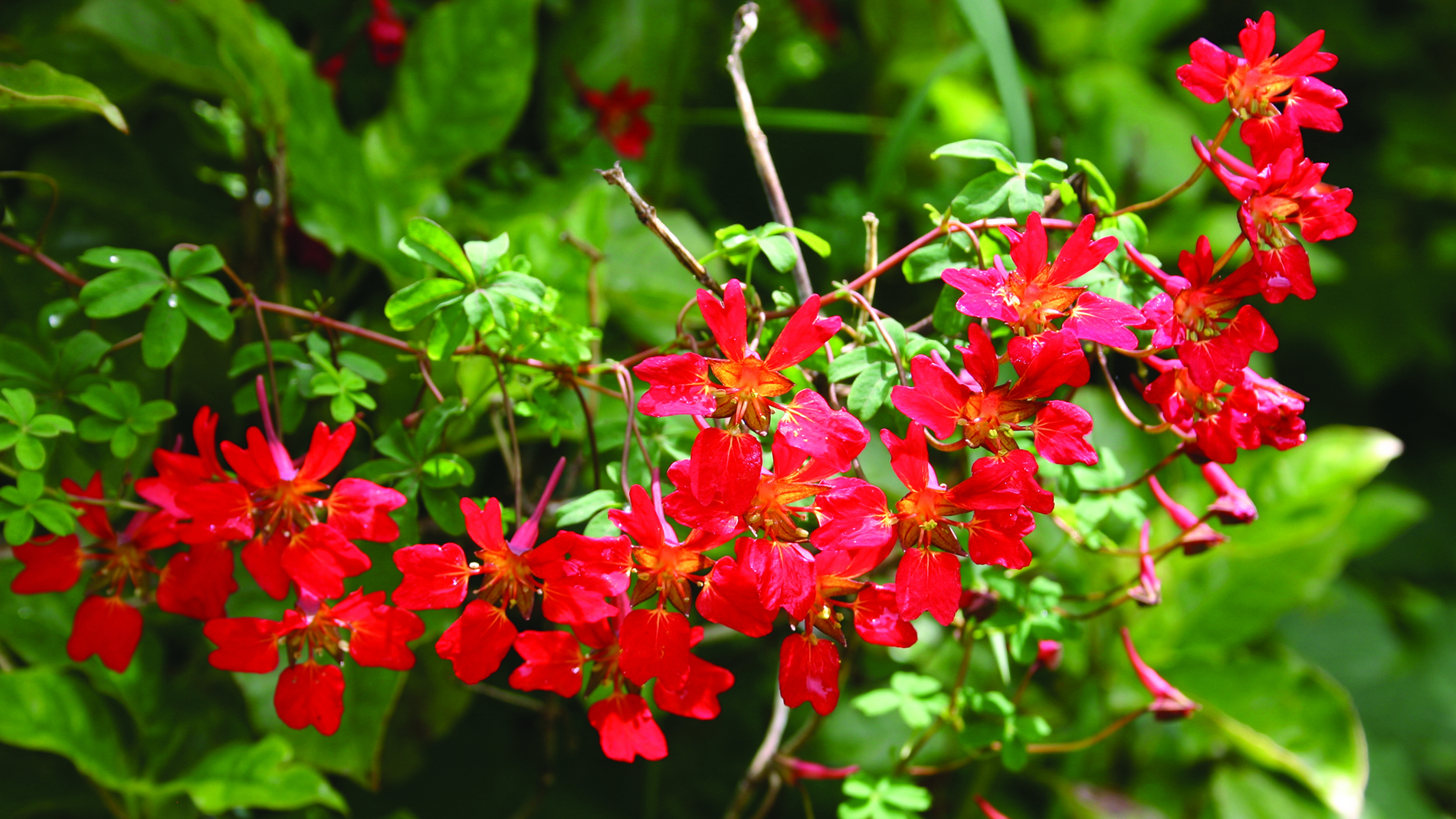| Management programme |
| Eradication |
| Objectives |
| Reduce the level of infestation of Chilean flame creeper within the Waikato region to zero density to prevent adverse effects and impact. |
| Impacts |
| Biodiversity, social and cultural wellbeing, amenity/recreation |
Chilean flame creeper is native to Chile and Argentina. It is an invasive environmental weed in New Zealand, particularly in Southland, Otago and Canterbury. It is also present in lower parts of the North Island, and becoming a problem weed in Manawatū-Whanganui.
It was brought into the country as a garden ornamental plant and was confirmed as naturalised by 1958.

What does it look like?
Leaves and stems:
Chilean flame creeper is a climbing plant with coiling tendrils and long leaves which die off over winter.
Slender stems and blue-green five fingered leaves approximately 10-35mm long.
Flowers and berries:
Tubular scarlet flowers with five irregular petals in summer (November to April), the bottom three having a very slim claw.
Flowering is followed by thin fleshy, deep blue berries in autumn.
Similar plants
Tropaeolum pentaphyllum, commonly known as ladies’ legs, is similar but has flowers with only two upper petals developed.
Where is it found?
Disturbed forest and shrubland.
Why is it a pest?
- Chilean flame creeper invades forest margins and disturbed sites, climbing high into tree canopies, suppressing growth, and replacing native species by shading and smothering them.
- It tolerates warm to cold temperatures, damp to dry conditions, salt, wind and many soil types.
- Seed dispersed by birds or by root fragments.
How do you get rid of it?
Chilean flame creeper is exceedingly difficult to control. Please do not attempt to control it. Let us know if you think you have seen this plant or have it on your property by calling 0800 800 401 to report it to your local biosecurity pest plant officer.
More information
Publications
- The following publications are available for download or from Waikato Regional Council. Contact us to request a copy (freephone 0800 800 401).



